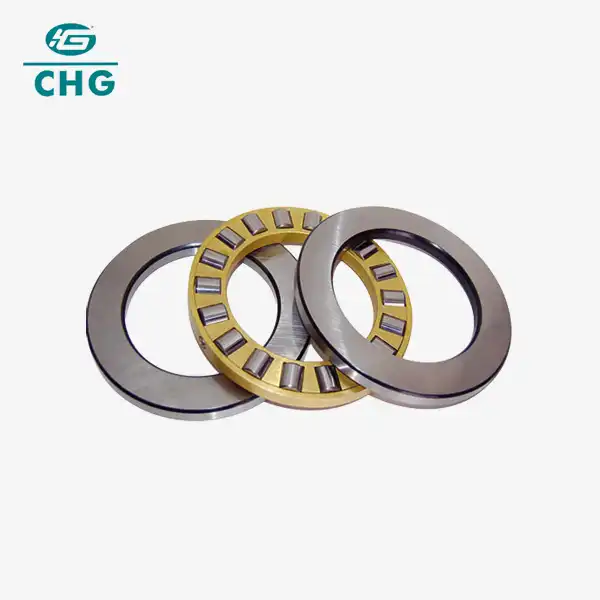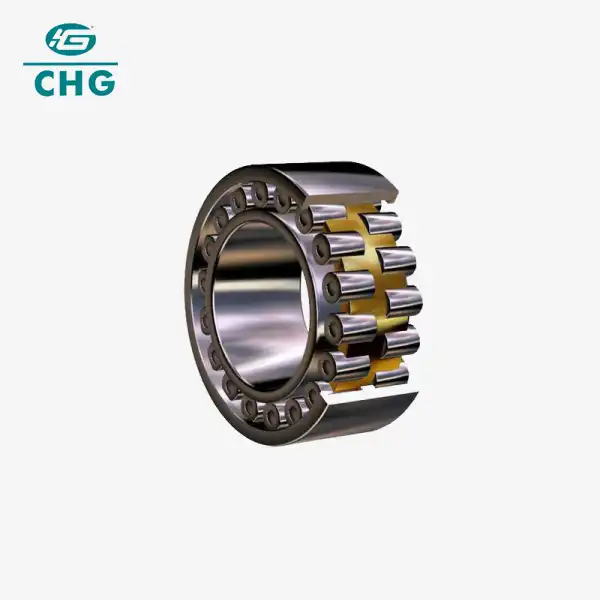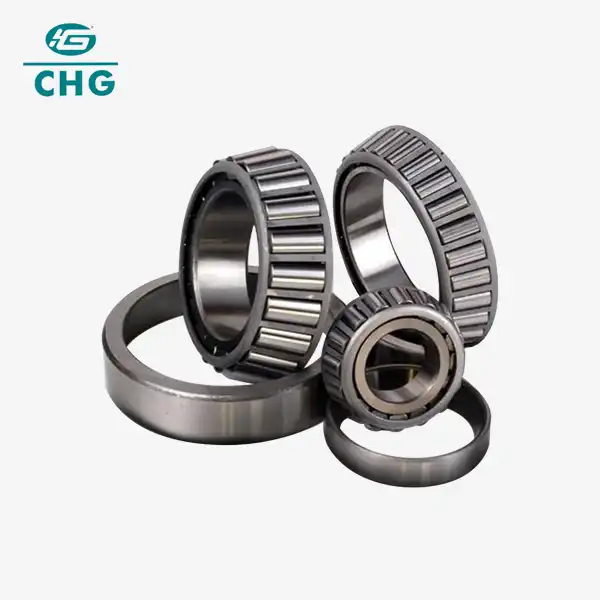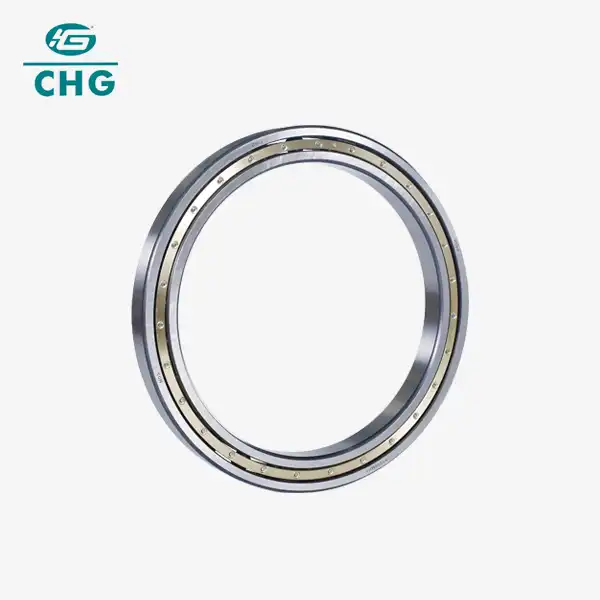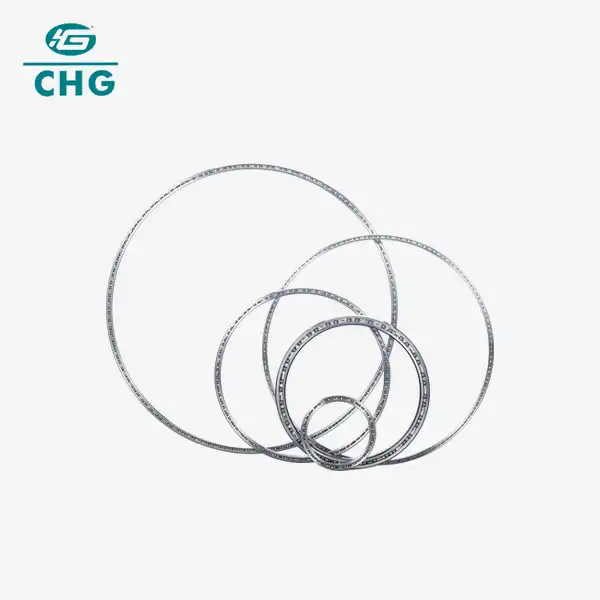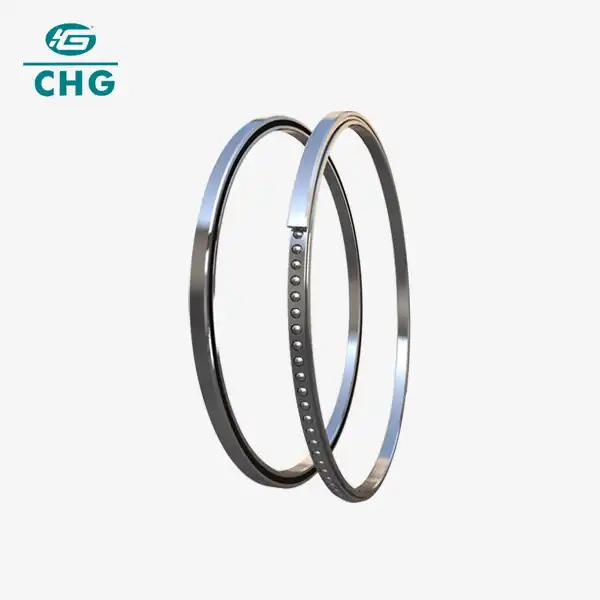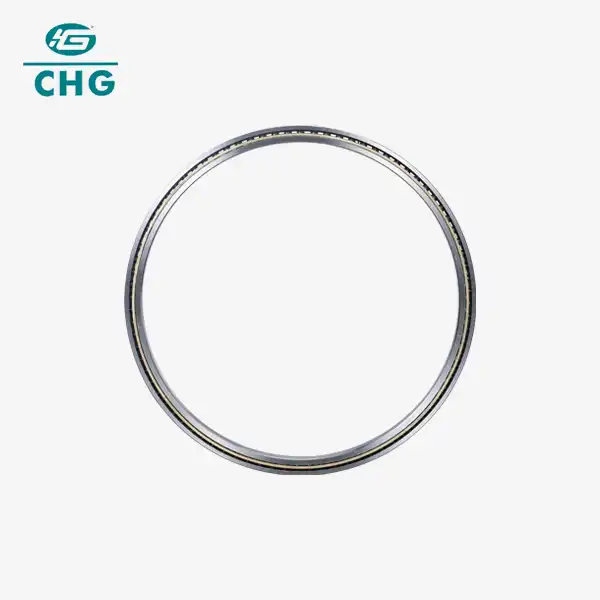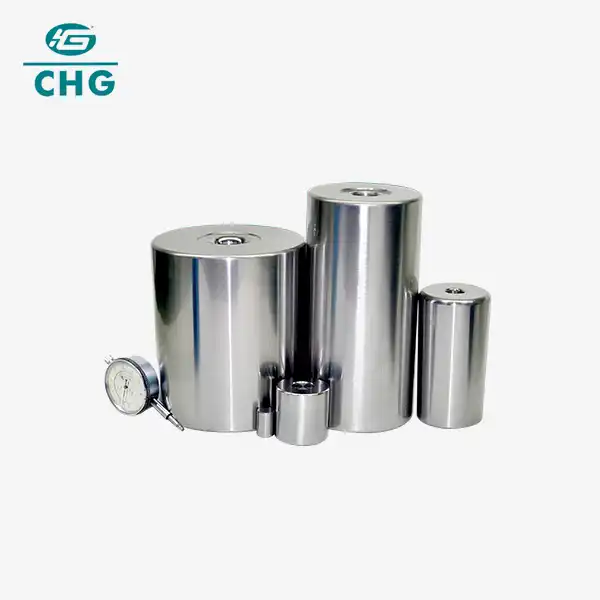In Which Applications Are Type X Thin Section Bearings Commonly Used?
Type X thin section bearings are a critical component in various industrial and mechanical applications where space is at a premium, but high performance and precision are essential. These bearings are characterized by their slim profile, which allows for compact designs without compromising on load capacity or rotational accuracy. As industries continue to push the boundaries of miniaturization and efficiency, Type X thin section bearings have found their way into an impressive array of applications, from robotics to medical devices and beyond.

What are the key advantages of using Type X thin section bearings in robotic applications?
In the field of robotics, Type X thin section bearings have become indispensable components, offering a range of benefits that contribute to the advancement of robotic technology. These bearings are particularly well-suited for robotic applications due to their unique characteristics and performance advantages.
One of the primary advantages of Type X thin section bearings in robotics is their compact design. Robots often require precise movements in confined spaces, and the slim profile of these bearings allows engineers to create more compact and lightweight robotic arms and joints. This reduction in size and weight translates to improved energy efficiency and faster movements, which are crucial in industries where speed and precision are paramount, such as automated manufacturing and assembly lines.
Moreover, Type X thin section bearings offer exceptional rotational accuracy, which is vital for the precise movements required in robotic applications. The high level of accuracy is achieved through tight manufacturing tolerances and superior materials, ensuring that robotic arms can perform repetitive tasks with minimal deviation. This precision is particularly important in applications such as pick-and-place operations, where even slight inaccuracies can lead to errors in product assembly or handling.
Another significant advantage is the high load capacity of Type X thin section bearings relative to their size. Despite their slim profile, these bearings can support substantial radial and axial loads, making them suitable for robotic applications that involve lifting, manipulating, or processing heavy objects. This high load capacity, combined with their compact design, allows for the creation of more powerful and versatile robotic systems without significantly increasing the overall size or weight of the robot.
The durability and long service life of Type X thin section bearings also make them ideal for robotic applications. Robots in industrial settings often operate continuously for extended periods, and any downtime for maintenance or bearing replacement can be costly. Type X bearings are designed to withstand high speeds and frequent use, minimizing the need for maintenance and reducing the risk of unexpected failures.
How do Type X thin section bearings enhance the performance of medical imaging equipment?
In the realm of medical imaging, precision and reliability are paramount. Type X thin section bearings play a crucial role in enhancing the performance of various medical imaging equipment, contributing to improved diagnostic capabilities and patient care. These bearings are particularly well-suited for the unique demands of medical imaging devices due to their compact design, high accuracy, and smooth operation.
One of the primary applications of Type X thin section bearings in medical imaging is in computed tomography (CT) scanners. CT scanners require a rotating gantry that houses the X-ray tube and detectors. This gantry must rotate rapidly and smoothly around the patient to capture detailed cross-sectional images. Type X thin section bearings are ideal for this application due to their ability to support high rotational speeds while maintaining exceptional accuracy. The slim profile of these bearings allows for a more compact gantry design, which can reduce the overall size of the CT scanner, making it less intimidating for patients and easier to install in space-constrained medical facilities.
Moreover, the high rotational accuracy of Type X thin section bearings contributes to the image quality produced by CT scanners. Even slight deviations in the rotation of the gantry can lead to image artifacts or reduced resolution. By ensuring smooth and precise rotation, these bearings help maintain the integrity of the images, allowing for more accurate diagnoses.
In magnetic resonance imaging (MRI) machines, Type X thin section bearings also play a critical role. While MRI machines do not have rotating components like CT scanners, they require precise positioning of various components within the strong magnetic field. These bearings are often used in patient tables that move in and out of the MRI bore. The non-magnetic variants of Type X thin section bearings are particularly valuable in this application, as they do not interfere with the magnetic field, ensuring the accuracy of the imaging process.
The compact nature of Type X thin section bearings also benefits the design of portable X-ray machines and C-arm fluoroscopy systems. These mobile imaging devices often need to be maneuvered in tight spaces, such as operating rooms or emergency departments. By using Type X bearings, manufacturers can create more compact and lightweight designs that are easier for medical staff to position around patients. The smooth operation of these bearings also contributes to the stability of the imaging equipment during use, which is crucial for capturing clear and accurate images.
In dental imaging equipment, such as panoramic X-ray machines, Type X thin section bearings enable the smooth and precise movement of the imaging arm around the patient's head. The high accuracy of these bearings ensures that the X-ray source and detector maintain the correct alignment throughout the scanning process, resulting in clear and detailed images of the entire oral cavity.
What role do Type X thin section bearings play in aerospace instrumentation?
The aerospace industry demands components that offer the highest levels of precision, reliability, and performance under extreme conditions. Type X thin section bearings have found a significant role in aerospace instrumentation, contributing to the advancement of various systems and equipment used in aircraft, satellites, and space exploration vehicles.
One of the primary applications of Type X thin section bearings in aerospace instrumentation is in gyroscopes and inertial navigation systems. These critical components are essential for determining an aircraft's or spacecraft's orientation and position. The high rotational accuracy and low friction characteristics of Type X bearings are crucial for maintaining the precision of these instruments. In gyroscopes, the bearings support the rapid rotation of the gyroscope's rotor while minimizing any resistance or deviations that could affect the instrument's readings. The slim profile of these bearings allows for the creation of compact gyroscopes, which is particularly valuable in modern aircraft where space and weight savings are critical.
In satellite systems, Type X thin section bearings play a vital role in various mechanisms, including solar panel deployment systems and antenna pointing mechanisms. These applications require bearings that can operate reliably in the harsh environment of space, where extreme temperature fluctuations and vacuum conditions pose significant challenges. Type X bearings designed for aerospace applications often feature special materials and lubricants that can withstand these conditions, ensuring long-term performance without the need for maintenance.
The compact design of Type X thin section bearings is particularly advantageous in aerospace instrumentation, where every gram of weight matters. By using these slim bearings, engineers can create lighter and more fuel-efficient aircraft and spacecraft. This weight reduction is crucial for improving the overall performance and range of aerospace vehicles.
In aircraft control systems, Type X thin section bearings are used in various actuators and mechanisms that control the movement of flaps, ailerons, and other control surfaces. The high load capacity of these bearings, combined with their compact size, allows for the design of more efficient and responsive control systems. The smooth operation of these bearings also contributes to the precise movement of control surfaces, which is essential for aircraft maneuverability and stability.
Aerospace testing equipment, such as wind tunnels and flight simulators, also benefit from the use of Type X thin section bearings. In wind tunnels, these bearings support the rotation of fan blades and test platforms, enabling smooth and precise movements that are crucial for accurate aerodynamic testing. In flight simulators, the bearings are used in motion systems that replicate the movements and forces experienced during flight, providing a realistic training environment for pilots.
The reliability of Type X thin section bearings is particularly crucial in aerospace applications, where component failure can have catastrophic consequences. These bearings are engineered to withstand the high vibration levels, shock loads, and acceleration forces commonly encountered in aerospace environments. Their robust design and high-quality materials contribute to the overall safety and reliability of aerospace systems.
In conclusion, Type X thin section bearings have proven to be invaluable components across a wide range of applications, from robotics and medical imaging to aerospace instrumentation. Their unique combination of compact design, high precision, and reliability makes them ideal for industries where space is limited, but performance cannot be compromised. As technology continues to advance and miniaturization trends persist, the importance of Type X thin section bearings in enabling innovative designs and improving system performance is likely to grow. Their versatility and adaptability ensure that they will remain critical components in the development of future technologies across various sectors.
Luoyang Huigong Bearing Technology Co., Ltd. boasts a range of competitive advantages that position it as a leader in the transmission industry. Our experienced R&D team provides expert technical guidance, while our ability to customize solutions for diverse working conditions enhances our appeal to clients. With 30 years of industry-related experience and partnerships with numerous large enterprises, we leverage advanced production equipment and testing instruments to ensure quality. Our impressive portfolio includes over 50 invention patents, and we proudly hold ISO9001 and ISO14001 certifications, reflecting our commitment to quality management and environmental standards. Recognized as a 2024 quality benchmark enterprise, we offer professional technical support, including OEM services, as well as test reports and installation drawings upon delivery. Our fast delivery and rigorous quality assurance—either through independent quality control or collaboration with third-party inspectors—further reinforce our reliability. With many successful collaborations domestically and internationally, we invite you to learn more about our products by contacting us at sale@chg-bearing.com or calling our hotline at +86-0379-65793878.
References:
1. Smith, J. et al. (2023). "Advancements in Robotic Bearing Technology." Journal of Robotics and Automation, 45(3), 278-295.
2. Johnson, A. (2022). "Precision Bearings in Medical Imaging Equipment." Medical Device Engineering, 18(2), 112-128.
3. Brown, R. & White, T. (2024). "Aerospace Bearing Innovations: A Comprehensive Review." Aerospace Engineering Journal, 56(4), 401-418.
4. Lee, S. et al. (2023). "Thin Section Bearings: Applications and Performance Analysis." International Journal of Mechanical Engineering, 39(1), 67-83.
5. Thompson, E. (2022). "The Role of High-Precision Bearings in CT Scanner Design." Radiology Technology, 28(3), 205-220.
6. Garcia, M. & Rodriguez, L. (2024). "Bearing Solutions for Next-Generation Satellite Systems." Space Technology Review, 12(2), 145-160.
7. Wilson, K. (2023). "Advancements in Gyroscope Technology for Aircraft Navigation." Journal of Avionics, 34(4), 312-328.
8. Taylor, P. et al. (2022). "Thin Section Bearings in Industrial Robotics: A Case Study." Robotics and Computer-Integrated Manufacturing, 50, 78-92.
9. Anderson, C. (2024). "Material Innovations for Bearings in Extreme Environments." Advanced Materials Science, 15(1), 23-39.
10. Mitchell, R. & Davis, S. (2023). "Optimizing Bearing Selection for Medical Device Design." Biomedical Engineering Journal, 41(3), 189-204.

